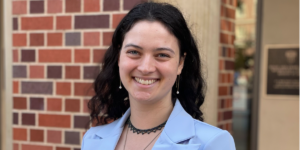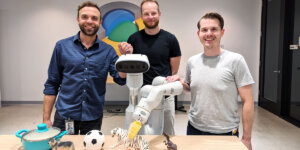
(Photo/iStock)
When an airplane crashes into the ocean, the downed plane’s black box holds many clues as to what happened. However, finding it is sometimes quite difficult. Malaysia Airlines Flight 370, for instance, plummeted into the Indian Ocean more than four years ago. Despite repeated international searches, authorities have yet to locate the downed aircraft and its flight recorders.
Thanks to the localization research of USC Viterbi post-doctorate Junting Chen and his advisor Urbashi Mitra – the Gordon S. Marshall Chair in Engineering and a professor of electrical engineering – finding a missing black box might become easier in the future. So could ensuring reliable cellphone service in urban areas with an overloaded network.
“The work we have been doing is broadly on localization, trying to find where objects are,” Mitra said. “These things we want to locate need some desired properties, for instance, they need to emanate some sort of signal that we can ‘hear.’ The idea is that we can collect measurements in and around the object and use those to figure out where the object is.”
Mitra and Chen’s localization algorithm calls for leveraging networks of sensors that receive and transmit signals. The key is collecting signal samples over a wide space.
A cell phone, for instance, sends out signals that could be captured by various devices, such as WiFi routers and the radios in traffic sensors, although some of the sensors were not designed for localization purposes. The strength of the signals depend on the distance of the various sensors from the phone. The closer the phone, the stronger the signal; the farther away, the weaker the signal.
Chen’s algorithm can capture the transmission of radio and acoustic signals and perform mathematical computations that shows the location of the phone or any other device in question. By exploiting simple properties of the acoustic and radio signals, one does not need to collect very many samples to decide the location of the target. Furthermore, samples far away from the target are also informative.

Junting Chen and Professor Urbashi Mitra (Photos Courtesy of Junting Chen/Will Taylor)
“By comparing the signal strength with the sensor locations and knowing that energy decreases as distance increases, you’ll get a signature vector of the source,” Chen said. “The peak of the vector tells you the source location.”
Mitra half-jokingly likens their research to a popular children’s game.
Recall the swimming pool game Marco Polo: “You close your eyes, you hear your friends shouting out, and you try to figure out where they are,” she said. “Our work is a very sophisticated form of playing Marco Polo. We’re trying to figure out where our ‘friends’ are by listening to the signals they are emanating.”
So how could their research help find a black box?
Imagine a plane crashes in the ocean. Search vehicles trace random paths in the ocean equipped with sensors, although the vehicles cannot possibly cover the entire search space. The sensors would receive acoustic signals from the black box and send that information for analysis.
“Our algorithm uses data from all these sensors – not just the few that pick up strong signals’’ said Chen, adding that most existing algorithms mainly rely on the strong signals to approximate the source location. Using simple properties of the signal and “by centralized processing of all of this data, we get a better result,” he said.
Similarly, their research holds the promise of possibly improving some cellphone communications.
In urban areas, sometimes so many people use their cellphones simultaneously that the network becomes overwhelmed, with calls getting dropped or voices cutting out. This occurs when a base station – a radio receiver and transmitter that serves as the hub of the local wireless network – becomes too stressed. A drone carrying a mobile base station could alleviate the problem.
But where to put the mobile base station?
By processing the radio signals between phones and base stations and the base stations themselves, Chen’s localization algorithm could determine the best spot to send the drone. “We could sense the location of the demand, the center of gravity, so that the flying base station can help the network in a most effective way,” he said.
Going forward, Mitra and Chen see many possible applications for their localization research. Chen’s algorithms could theoretically make it possible to improve medical imaging methods to locate a tumor in a fraction of the time it takes now or with many fewer image samples.
They are in discussions with scientists at the USC Michelson Center for Convergent Bioscience Bridge Institute about ways to enhance other biological imaging through their work. Other possible applications include algae bloom and oil spill detection and tracking, Mitra said.
As the Internet of Things (IoT) develops and sensors and other devices multiply and increasingly connect to the Internet, localization capabilities will improve even further.
“We want everything to happen faster and more accurately and with less power,” Mitra said.
Published on August 22nd, 2018
Last updated on May 16th, 2024












